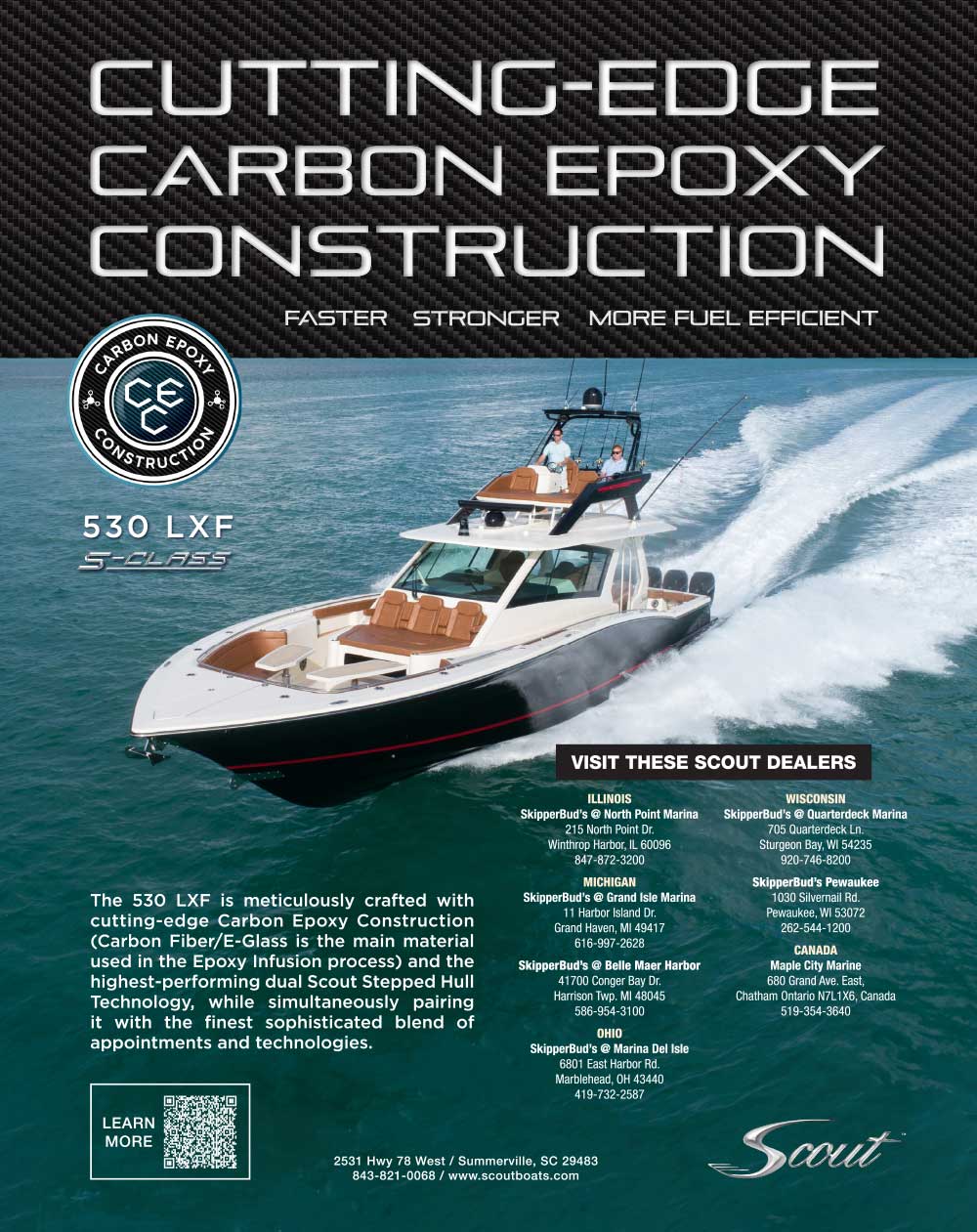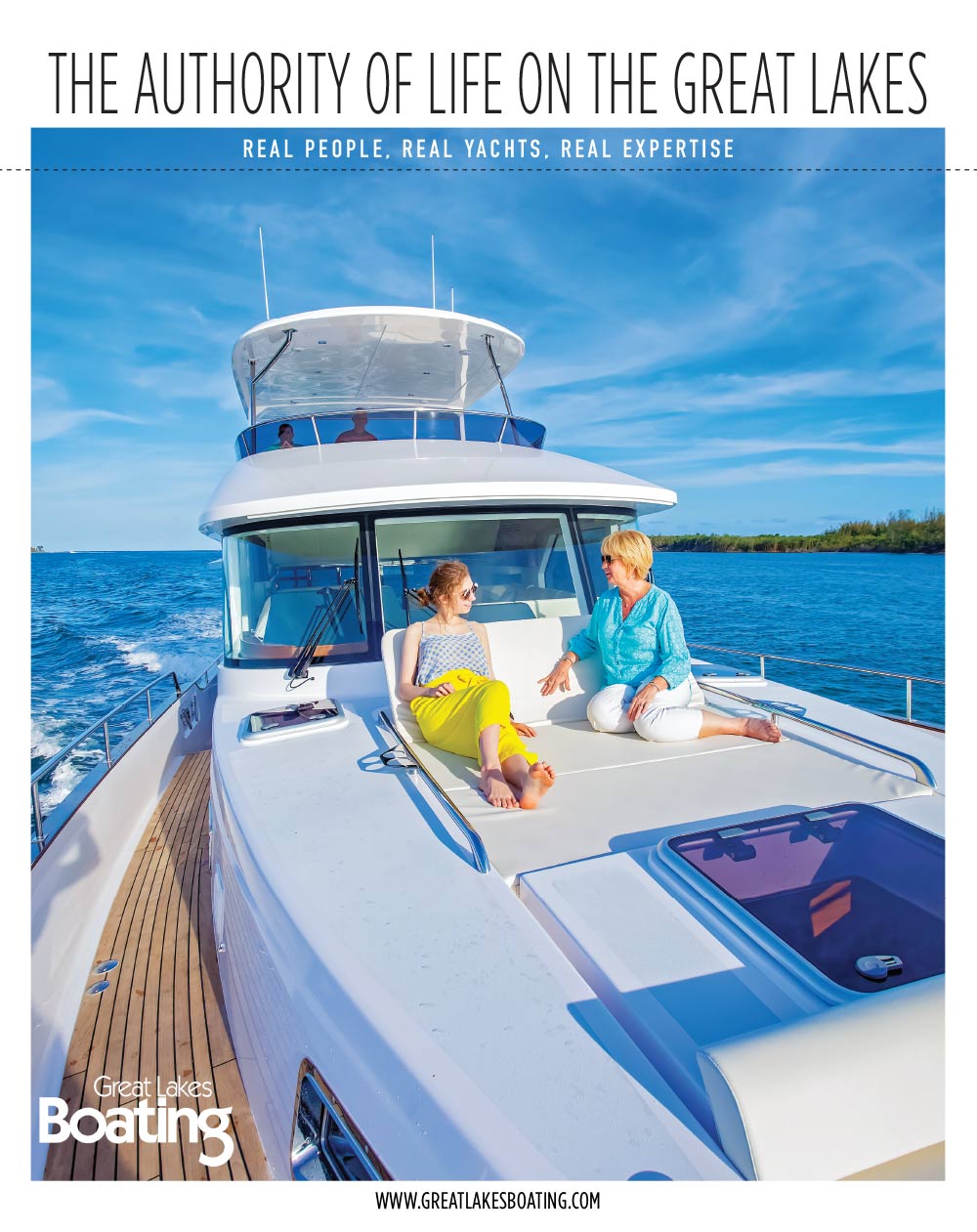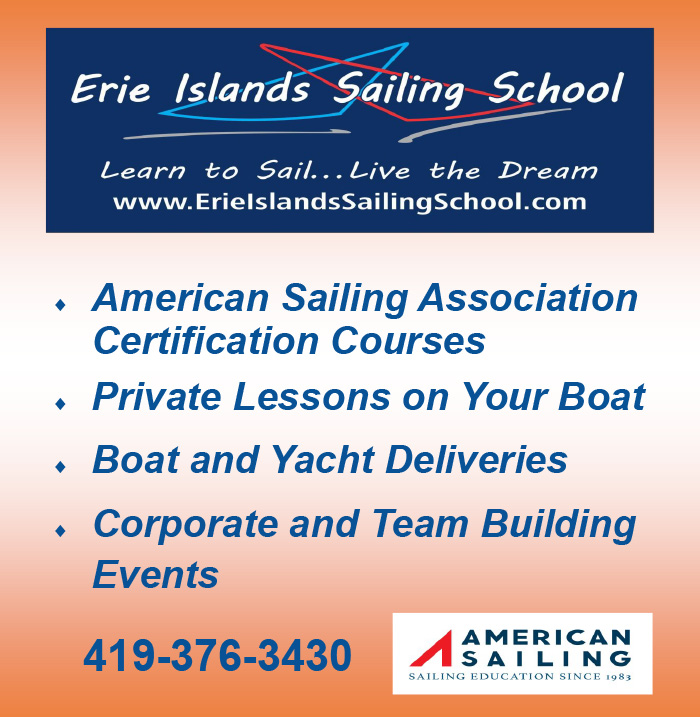

A True Fishing Boat Worthy Of A Closer Look
A Wisconsin Must-Stop
A True Fishing Boat Worthy Of A Closer Look
A Wisconsin Must-Stop




VOLUME 40, NUMBER 2
Harris Publishing, Inc.
Darryl W. Harris — Founder
Jason Harris — President
Chuck Harris — Vice President
Ryan Harris — Vice President
Greg Larsen — Vice President
Clayton Ward — Treasurer
Janet Chase — Secretary
Great Lakes Boating
520 Park Ave. Idaho Falls, ID 83402
800-638-0135
Also Publishers Of:
Pontoon & Deck Boat Magazine
and Houseboat Magazine
Cover Boat: BENETEAU Swift Trawler 48
Executive Editor | Brady L. Kay
Assistant Editor | Heather Magda Serrano
Editorial Staff
Tim McKenna, Lane Miles, Roy Sparks, Noah Pool, Gregory Group
Dan Armitage, Annie Carbutt, Bill Gius, Bradley Sallee
Advertising Director | Greg Larsen
Administrative Assistant | Robin Witbeck
Marketing Director | Cameron Bischoff
Lead Designer | Chloe Adelizzi
Production | Jim Donovan
Circulation Director | Chuck Harris
Cover Design by: Chloe Adelizzi




ould you care to join me in a virtual toast? Yeah, I can’t say I blame you. The word “virtual” has evolved into a negative term for a lot of people, and while a virtual toasting with friends and family is a safe way to still be social, it’s really just a fancy way of saying you need to supply your own drink. Regardless of who is paying the tab, I applaud those who are committed to making every summer count as we look to put this pandemic in our rear view mirror, and that’s worth raising a glass for.
I’ve attended my fair share of virtual boat shows in the last two years as manufacturers and dealers attempt to do something … anything … to fill the void of the loss of some of the major boat shows due to the global pandemic. Again, I applaud the effort and the “show must go on” determination, but all this does is make me appreciate those years when attending boat shows such as Chicago, Detroit, Toronto and others wasn’t such a foreign concept.
Shows are slowing coming back; at least, that’s what I tell myself when I grow tired of looking at a digital screen to catch a glimpse of the latest models. It was nice to have the Miami Show back this year and I don’t believe I was the only one who was excited. I could have sworn I saw a couple of manufacturers strip down to their Hanes boxers and roll around on the convention center floor, but I might have been just imagining that.



By Tim McKenna
ailing, in itself, is part of the technical process through which one learns the larger life lessons.” —Unknown
As some may know, I have been teaching sailing in various places for the past 15 years or so. In addition, I have had the pleasure of owning and operating my own sailing school for the past 10 years. It has been a very rewarding and even gratifying experience. During this time, I have met and sailed with people from all parts of this country and others. Many have become and remain friends both on and off the water.
This recalls many fond memories of classes and students. The dreams and realities of many have been or are in the process of being fulfilled through sailing to new places and over the horizon. The somewhat informal surveys that I have taken over the years suggest some interesting numbers. Around 15 percent have gone on to purchase their own boat. Approximately 40 percent or more of the students have chartered in the U.S. and/or the Caribbean and I’ve heard from a dozen or so who have been to the Mediterranean.
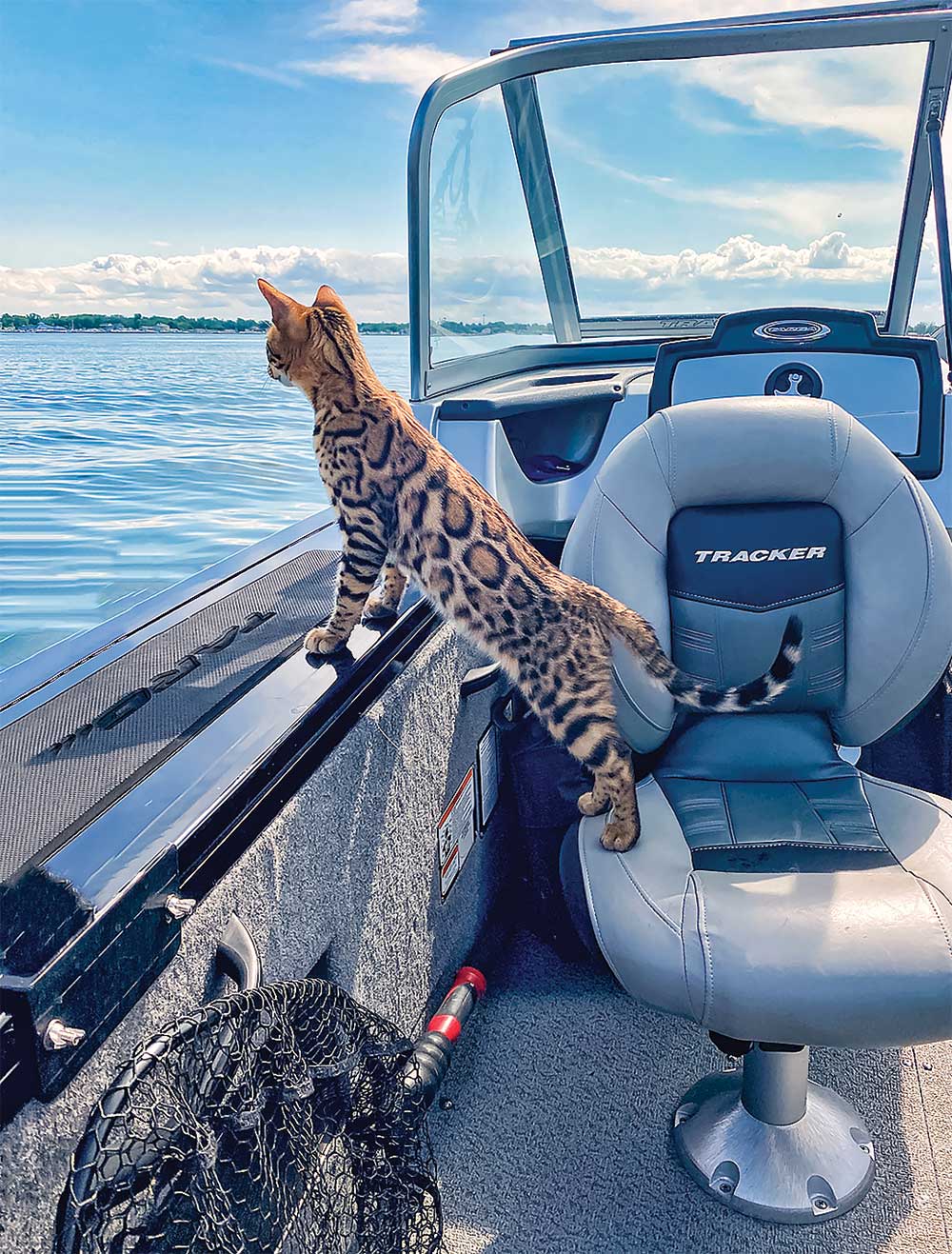







uilding on the wealth of the BENETEAU Trawler DNA and customer feedback, the new Swift Trawler 48 goes above and beyond in every way possible. From practicality to comfort, this new trawler’s Andreani design lends itself to functionality and easy living.
Measuring in at 48 feet and 4 inches with a beam of 14 feet and 9 inches, the ST48 takes the position of second largest Swift Trawler of the BENETEAU trawler range. Grand and spacious, this powerful new model transcends single demographics, appealing to a wide range of people.
hile sailing and cruising on Lake Michigan, many of us have the sudden urge to visit the Wisconsin city where parts of the Russian satellite “Sputnik” crashed on September 5, 1962. So it’s time you stopped in Manitowoc, Wis., if it has been awhile.
Manitowoc has long been a great boating destination and is also the home port for the S.S. Badger Ferry. You’ll have a hard time finding a more accommodating port city with the level of sail and powerboat services found at Manitowoc Marina.
Manitowoc is only about 80 miles north of Milwaukee on the east shore of Lake Michigan. The lighthouse for Manitowoc harbor has stood at 44°05’31.6” N 87°38’ 38.633” W since 1918. It stands over five stories tall, so you can’t miss it … well, please do miss it and continue west into the harbor and then you can go visit the lighthouse. Be sure to wear comfortable shoes for the walk through the nature preserve part of the spit of land, created by harbor dredging, that leads to the 400-foot-long concrete breakwater.

hen marine journalists get together, we talk. This is especially true at boat shows as we’re all on the hunt for the “next big thing” or simply just wanting to know what one boat everyone at the show is talking about. At the Fort Lauderdale International Boat Show, the next big thing and the one boat everyone was talking about, both led us to the same booth.
Volvo Penta had already created a pre-show buzz with the release of its D6-DPI diesels, but it was the new SOLACE 415CS that everyone was talking about. The standard response to the question being asked at the show of what have you seen that is exciting or new was simply, “Have you seen the new SOLACE 415CS with twin Volvo Penta D6-DPI diesels paired to Aquamatic DuoProp sterndrives?”
This center console fishing boat with twin sterndrives gave the annual FLIBS show a breath of excitement as show goers were drawn in for a closer look.

ost boat owners have come into contact with a marine surveyor at some point. For those who haven’t, a marine surveyor is a chap who inspects a boat or yacht, for a fee, and then renders an impartial opinion as to the condition of the craft. The surveyor more often than not works on the behalf of a boat buyer. The field of marine surveying is unregulated, by either the federal government, or with a couple of exceptions, the various state governments.
The amount of credentials on a surveyor’s letterhead, and the number of letters after his name, can be dazzling. They can also be meaningless. Like a parachute, a survey report that is full of gaps and holes is arguably worse than nothing at all. It is better to have no information on which to rely than to rely on something that is incomplete or inaccurate. It is relatively easy, however, to find a skilled and qualified surveyor who will fulfill your reasonable expectations of him or her, and do a good job on your behalf.
Great Lakes:
Party Planning
ummer of 2022 is a time for adventure—lakes thaw, boats leave harbor, and celebrations around the Great Lakes come back in full force. If you’re feeling stir-crazy, these festivals are a perfect way to get out and travel, enjoying the simple pleasures of life on the way. Up, down and across the Great Lakes, there are music extravaganzas and cultural experiences to liven up your outing and make this summer an unforgettable experience.
In 2017, locals of Put-In-Bay started a tradition, bringing good, old-fashioned country sounds to the Great Lakes. This amazing debut was headlined by Toby Keith, and they’ve kept the music going year after year, only taking a break in 2020 for safety’s sake. But now they’re back in full force.
Remember
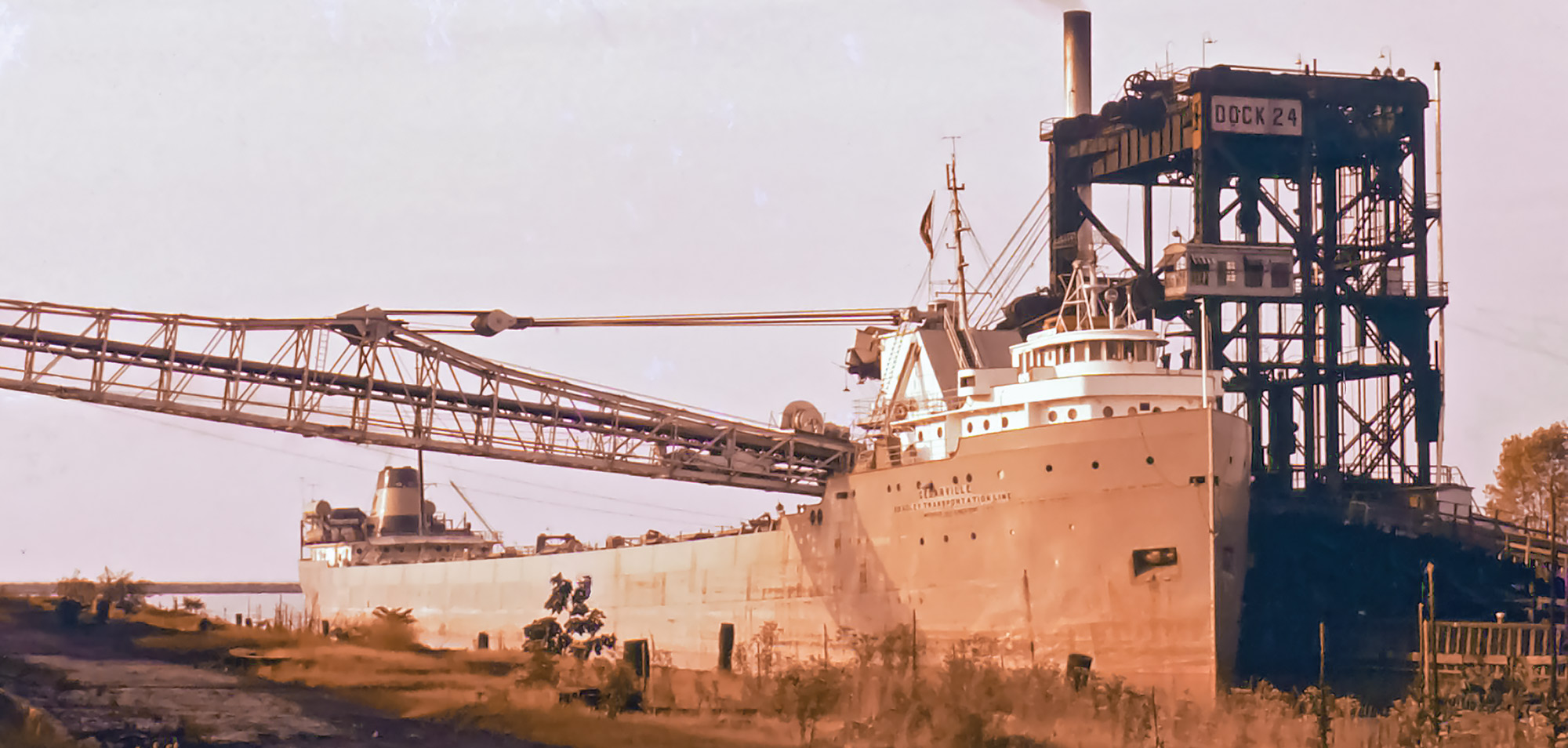

itting in the colossal shadow of the Mackinac Bridge, the Cedarville whispers its haunting tale.
Back in 1927, the Cedarville was launched at the River Rouge, Mich., as the A.F. Harvey. She was a straight-deck bulk carrier for the Pittsburg Steamship Company (U.S. Steel) and measured in at 604 feet long with a triple expansion steam engine.
On May 7 of 1965, the Cedarville left Port Calcite to go to Gary, Ind., with a crew of 35 men and over 14 thousand tons of limestone. However, they never made it.
The fog thickened as they neared the Straits of Mackinac and due to a lack of communication, they collided with the Norwegian vessel Topdalsfjord. The Cedarville briefly dropped anchor to contact their home office for instructions before their attempt to beach the vessel near Mackinaw City. But then at 10:25 a.m., the Cedarville suddenly rolled over on its starboard side and sank 105 feet down into the water. Ten crew members lost their lives and all but one body was recovered.
y the time Amy Pelka began working for the water division of the United States Environmental Protection Agency (U.S. EPA) in 1991, the lower Ashtabula River, which flows through northeast Ohio to Lake Erie’s central basin, was saturated with contaminants.
For decades, a nearby industrial hub situated along Fields Brook had been belching chemicals into the river in the form of mercury, chromium, lead, zinc, uranium, and radium, to name a few. Debris blocked the channel so that a sailboat couldn’t even make its way through. Most of the original natural shoreline had been hardened. Toxins made the river a threat to the health of humans, fish and other animal life. The pollution had become a hazard—a legacy, they called it.

ishing is a great pastime, regardless. There’s nothing quite like the connection between your own silent stillness, the rod in your hand, and the smooth water as you wait in anticipation. Before prescription drugs and mental health therapy, there was fishing. We’ve got respect for the sport even in its humblest form. That being said, it never hurts to up your game a little with help from the latest tools and gear. If you love fishing, you’re going to love this issue’s roundup. This one is worth your time. Trust us.


oho salmon are among the most popular salmonid species for recreational anglers to target in the Great Lakes and in Lake Michigan in particular. That said, the state with the smallest share of a Great Lake, Indiana, is one of the top producers of coho each spring. Indiana has a mere 43 miles of Lake Michigan shoreline and 224 square miles of Lake Michigan water, yet about this time each year anglers targeting coho flock to ports such as Michigan City to hook up.
Originally native to the Pacific Ocean, coho were introduced to Lake Michigan in the late 1960s and have earned a strong following by anglers aboard boats, atop piers and working tributaries. The salmon are great to eat and fairly easy to catch once located in the spring when they school-up both near and offshore.
Coho are raised in a hatchery for more than a year before being stocked into tributaries around Lake Michigan. When they are about a year and a half old, they migrate to the big lake to mature and feed on a diverse diet that includes baitfish such as young alewives, shiners, round gobies and aquatic invertebrates such as water fleas, midge larvae and freshwater shrimp. Later in the season, coho eat terrestrial insects that get blown into the lake, such as flies, lady beetles, and in recent seasons, even stinkbugs, as those odiferous populations rise.

www.pdbmagazine.com
www.facebook.com/PDBMagazine
www.twitter.com/PDBMag
GREAT LAKES BOATING
www.greatlakesboating.com
www.facebook.com/glboating
www.instagram.com/greatlakesboating
ighthouses are universally accepted as symbols of hope—beacons of light in the darkness, always ready to guide weary mariners safely to shore. Consequently, people may not consider the dangerous circumstances that have often accompanied the lives of lighthouse keepers or the perils that come when a ship draws too close to a tower’s beckoning light. In the history of the Ashtabula Lighthouse and its predecessors, numerous accidents and dangerous events have occurred, including near misses that were almost tragedies.
The first lighthouse to stand watch in Ashtabula Harbor on Lake Erie was built in 1836, a hexagonal tower that stood 40 feet above the water near the east pier. The second was built in 1876 on the west pier head. It included an elevated walkway for access to the tower when the water was high. In 1880, a schooner crashed into the walkway, destroying a 60-foot length that had to be repaired. Later in the summer of 1891, another schooner collided into a darkened skeleton tower near the lighthouse and toppled it.


